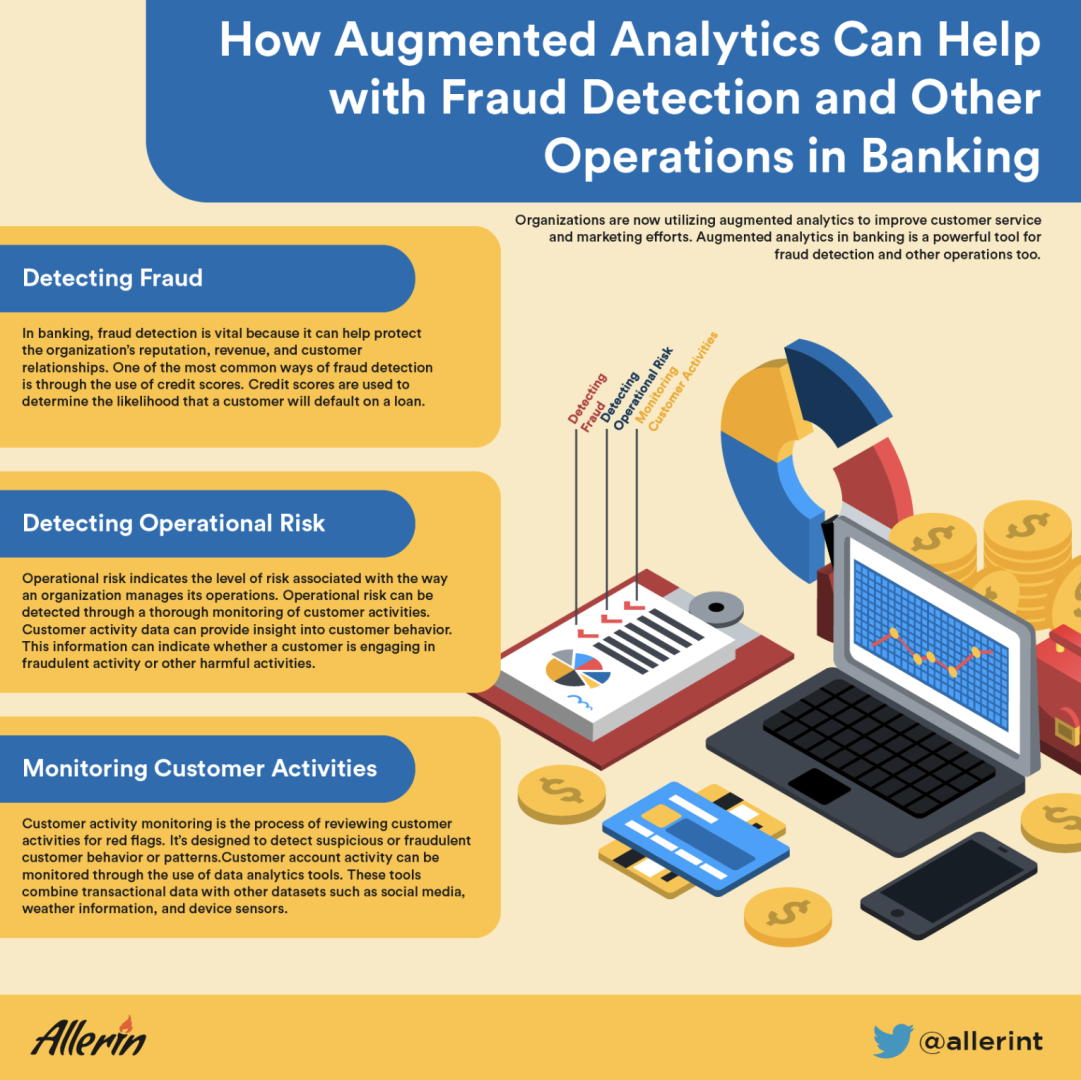Comments
- No comments found

Organizations are now utilizing augmented analytics to improve customer service and marketing efforts.
Augmented analytics in banking is a powerful tool for fraud detection and other operations too.
Fraudulent activity is a risk to any organization. With the right combination of checks and balances, an organization can reduce the risk of fraudulent activity. However, how you monitor for suspicious activity and what processes you have in place are equally important. If your organization is prone to fraud, you need to implement the right monitoring protocols to prevent fraudulent activity before it happens. With augmented analytics in banking operations and processes, banks can utilize different datasets to gain a complete view of their customers’ activities and detect fraudulent behavior. This article will walk you through various use cases on fraud detection and other operations in banking using augmented analytics.
Augmented analytics is an advanced analytics approach that helps businesses to detect and prevent fraud using existing datasets. It combines an organization’s transactional data with third-party data sources to create a complete view of the entire customer journey. These datasets can be from social media, mobile app data, or device sensors. With an augmented analytics approach, you can use machine learning algorithms to identify anomalies. You can then investigate and audit those anomalies to detect fraudulent activity. Augmented analytics can help banks in fraud detection and other operations in banking, such as customer service, marketing, and compliance.

Fraud detection is the process of identifying accounts where fraudulent activity has occurred or is likely to occur. In banking, fraud detection is vital because it can help protect the organization’s reputation, revenue, and customer relationships. Fraudulent activity is also a costly problem. It can negatively impact the bottom line through litigation, reputational damage and operational costs. Fraud creates mistrust between customers and the bank, which can result in lost revenue. There are many ways that fraud detection can happen. One of the most common ways is through the use of credit scores. Credit scores are used to determine the likelihood that a customer will default on a loan. Credit scoring algorithms look at factors such as past payment history and the amount of available credit.
Operational risk indicates the level of risk associated with the way an organization manages its operations. In banking, risk is associated with fraud, compliance violations, IT operations, data security and other areas. The goal of operational risk management is to reduce the likelihood that negative events associated with these risks will occur. Operational risk can be detected through a thorough monitoring of customer activities. Customer activity data can provide insight into customer behavior. This information can indicate whether a customer is engaging in fraudulent activity or other harmful activities. It can also indicate whether a customer is engaging in activities that put the bank at risk. For example, fraud detection can be used to identify customers who are violating compliance rules or using the wrong banking channels.
Customer activity monitoring is the process of reviewing customer activities for red flags. It’s designed to detect suspicious or fraudulent customer behavior or patterns. When implemented correctly, customer activity monitoring can be an effective way to detect fraudulent activity. In banking, customer activity monitoring is primarily focused on reviewing customer account activity. Customer account activity can be monitored through the use of data analytics tools. These tools combine transactional data with other datasets such as social media, weather information, and device sensors. Maintaining a complete view of the customer journey provides an organization with the ability to detect fraudulent activity. It can also help the organization prevent fraudulent activity.Augmented analytics in banking is a powerful approach to fraud detection and operational risk management. It helps businesses to gain a complete view of their customers and their activities. This approach allows businesses to detect anomalies and identify fraudulent activity before it happens. Retailers and financial organizations such as banks must leverage the power of augmented analytics to prevent fraud.
Naveen is the Founder and CEO of Allerin, a software solutions provider that delivers innovative and agile solutions that enable to automate, inspire and impress. He is a seasoned professional with more than 20 years of experience, with extensive experience in customizing open source products for cost optimizations of large scale IT deployment. He is currently working on Internet of Things solutions with Big Data Analytics. Naveen completed his programming qualifications in various Indian institutes.
Leave your comments
Post comment as a guest